EHS & employee wellbeing remain top priority at Mumbai Metro Line 3, UGC – 07
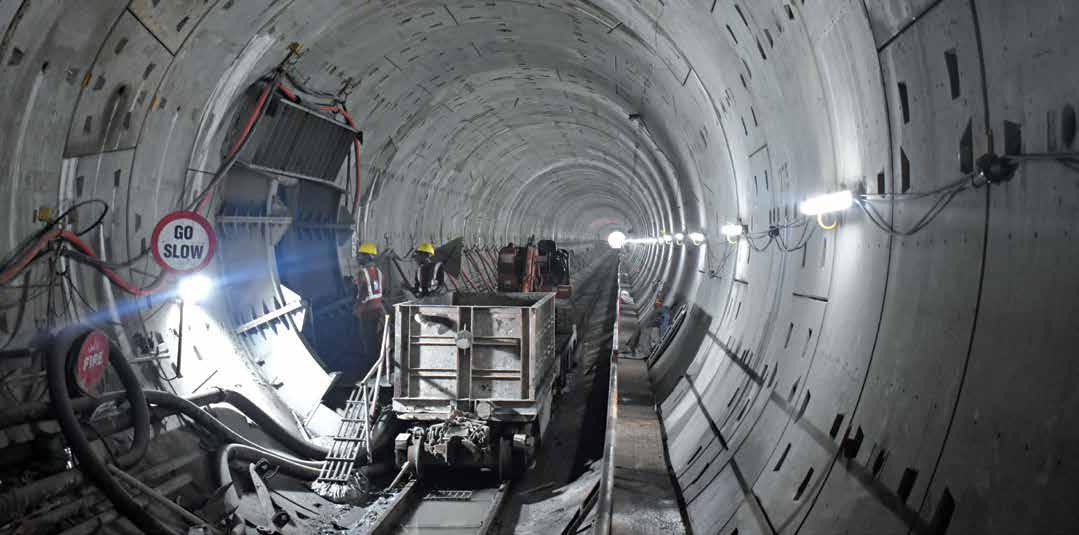
Although the project team at Mumbai Metro Line 3, Underground Package – 07 missed winning the L&T Construction Safety Award 2020 by a whisker, their robust EHS programmes have won them the accolades of being ‘close contenders.’ That, however, has not deterred Project Director, H Jayarama (HJ) and Chief OHS&E Manager, Rajesh Krishna Bhandary from continuing their efforts to keep EHS and employee & workmen wellbeing top priority at workplaces, offices and their three labour camps. “We are managing the wellbeing of 237 staff and 2,091 workmen in the overcrowded city of Mumbai and we seem to be doing a good job of keeping our safety record intact,” mentions HJ with a smile. Both he and Rajesh have more reason to smile for their project has already clocked 9 million safe man hours and counting.
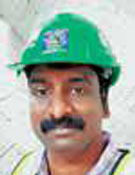
We identified ‘raw’ workmen, marking all of them with a ‘N’ on their reflective jackets. They were specially trained, and their work strictly and regularly supervised till they were able to perform their tasks well.
Rajesh Krishna Bhandary
Chief OHS&E Manager
Training is key, for both new and experienced
Right from the initial stages of the project, statistics revealed that most of the injuries were occurring due to the deployment of new workmen, working for the first time at a construction site. “A large number of our new workforce were from villages with an agricultural background taking up construction jobs to run their families in the off season when they were not harvesting their crop in their native places,” informs Rajesh. “We identified such ‘raw’ workmen, marking all of them with a ‘N’ on their reflective jackets. They were specially trained, and their work strictly and regularly supervised till they were able to perform their tasks well.” This ploy stood the team in great stead especially post the unlock when they had to mobilize a lot of fresh labour.
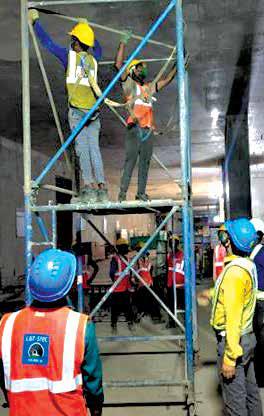
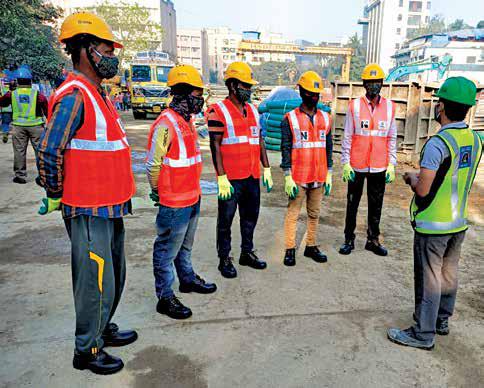
An interesting initiative was to use the expertise of OEMs and their knowledge of their equipment to conduct regular training sessions by them at site. Equipment manufacturers like M/s. Messer held sessions on the safe usage of the gas cutting set, M/s. Hilti on the safe usage of electrical equipment, M/s. Peri India and CSTI on safe scaffolding.
Building a team of safety champions
“A project is successful when there is participation from all levels of the workforce and a commitment from the top management to drive the team to achieve the goal of ‘Zero Harm’,” says HJ. To create a sustainable safety culture, HJ and his team initiated a programme of identifying one workman from a group of 20 to monitor their work at ground level. “They were our ‘Safety Champions’,” says Rajesh, “and till date we have identified 190 such safety champions at our project. Not only are they motivated to work with more vigour and commitment, but they provide a different perspective outside of an individual’s viewpoint.” The team discovered several other benefits especially in terms of improved monitoring and reporting of unsafe acts and conditions that further improved the site’s EHS performance.
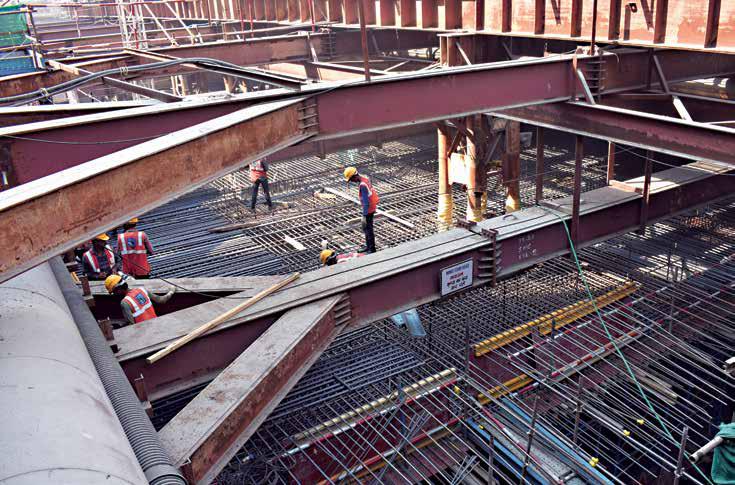
Keeping the 5 ‘S’s top of mind and action
Adherence to the 5 ‘S’s of Sort, Set in order, Shine, Standardize & Sustain is a part of SOP that is diligently monitored. “We conduct weekly and monthly inspections and monthly audits,” adds Rajesh. “We have introduced the Best Housekeeping Award scheme given away every month during the OHSE meeting.”

A project is successful when there is participation from all levels of the workforce and a commitment from the top management to drive the team to achieve the goal of ‘Zero Harm’.
H Jayarama
Project Director
Rewards and softer support for better results
“We believe in a reward and not a penalty culture,” remarks HJ. “We implement our OHS policy in spirit at site that has even improved the behavioural impact.” Staying true to that sentiment, the team encourages people to do good work with weekly and monthly awards and appreciation like the Safest Workman or Employee for the month. Rajesh emphasizes that, “an assertive and committed approach by our top management towards Occupational Health and Safety assures a definite and continual improvement of the system.” This is one of the few sites to have a cell phone zone at workplaces, a counselling centre for those violating EHS systems and a fingerprint authentication system on the bar bending machines to prevent unauthorized usage.
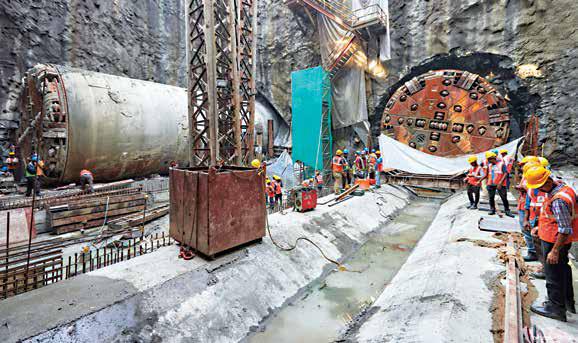
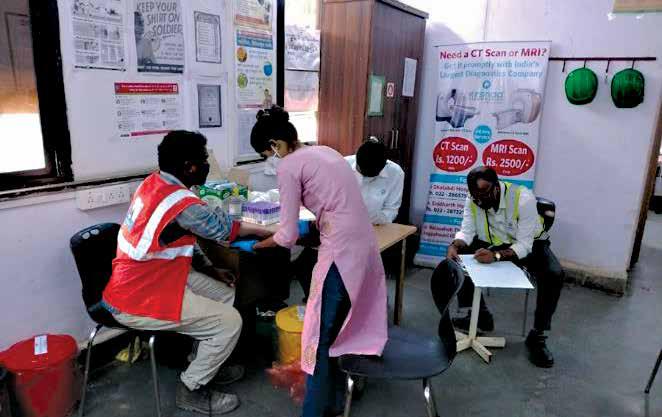
Vaccination for workmen and staff
A healthy site is a more productive one
On the health side, the project has successfully undertaken free HIV testing at site. Till date, 10,375 workmen have been tested of which 14 tested positive who have been treated by the Maharashtra State AIDS Control Society. “Initially, there was resistance from those who tested positive,” mentions Rajesh, “being unwilling to take medication, suffering from lack of awareness, fear of losing their jobs and living with the stigma but they have been satisfactorily managed.” Programmes to promote awareness of HIV and human trafficking are held every month by the NGO, ‘Purnata’.
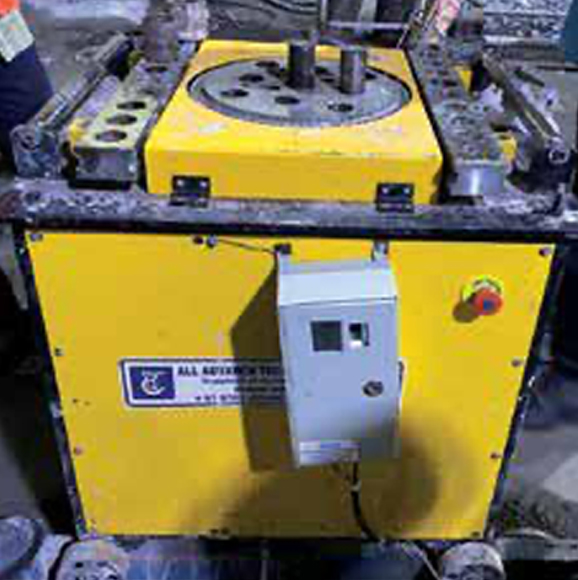
Bar bending machine equipped with fingerprint authentication
325 million people worldwide live with hepatitis as per a World Health Organization report, though 80% of them have no access to testing and treatment. The project’s execution & admin teams have organized hepatitis testing & vaccination for all workmen free of cost and has achieved 80% participation without any positive cases.
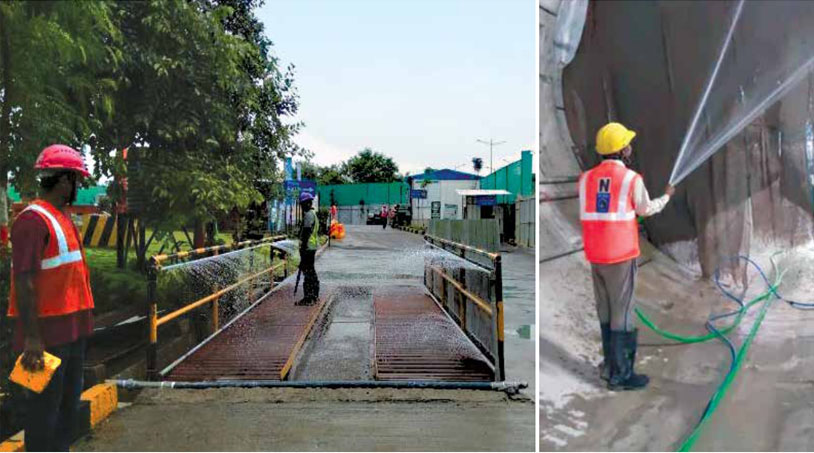
Small nicks and cuts are common at a construction site but if left unattended there is always the danger of tetanus for which regular vaccination campaigns are being conducted as also testing for malaria. “We have also initiated a full body medical check-up for all workmen to check for blood pressure, cholesterol and critical diseases by an external agency,” informs Rajesh and although each test costs INR 10,000, it is free for the workmen with the company bearing the cost.
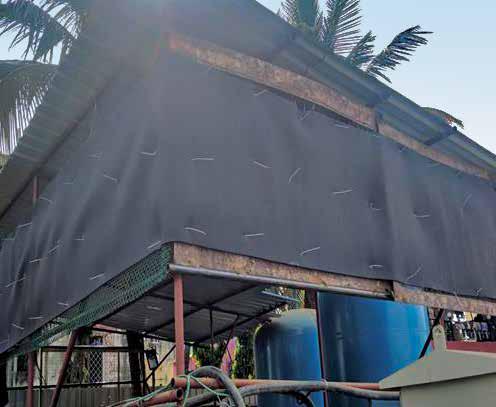
Efforts to keep the environment clean
Several steps have been taken to sustain the environment like an automated wheel wash bay for uniform washing of the wheels without human intervention, an ETP plant to treat wastewater from the tunnel, noise barriers around compressors & ventilation ducts to control the noise and reuse waste concrete to fill potholes, tree protection zones and other works. “We have installed a reclamation tank too at the casting yard,” adds Rajesh, “to segregate aggregates from wastewater. Both are then reused: aggregates for concreting and the wastewater in sprinklers to control dust.” Used paper is also disposed of to an NGO for recycling.
As Mumbai continues to remain a hot COVID-19 zone, HJ, Rajesh and his team remain committed to keep their men safe and healthy so that work proceeds as planned.